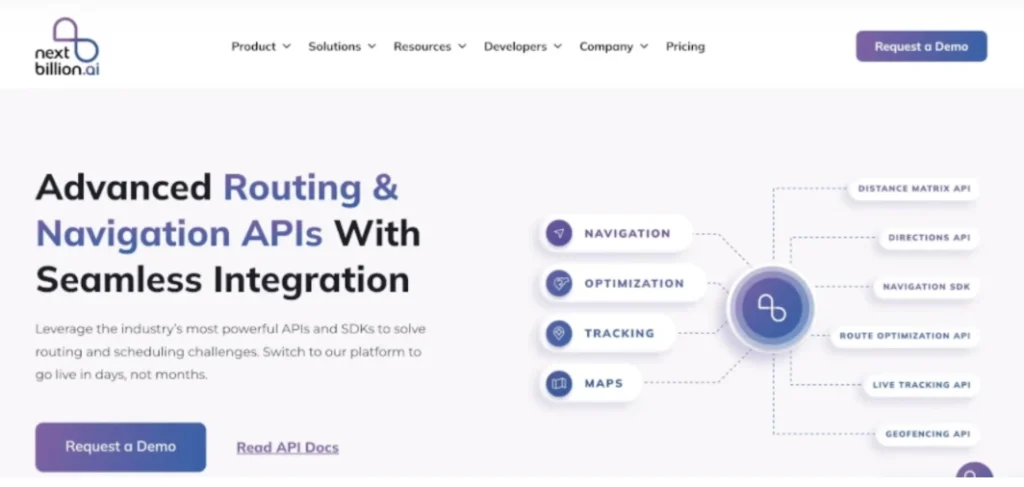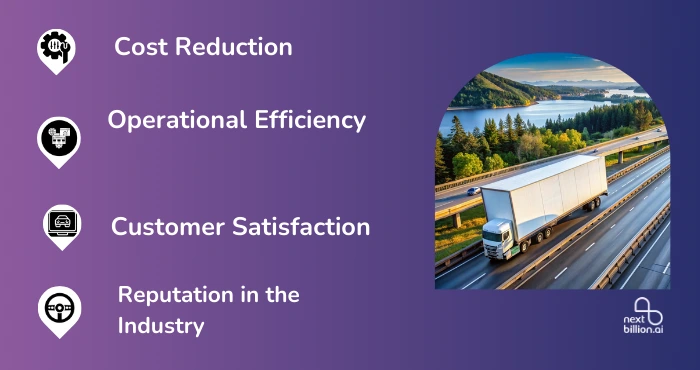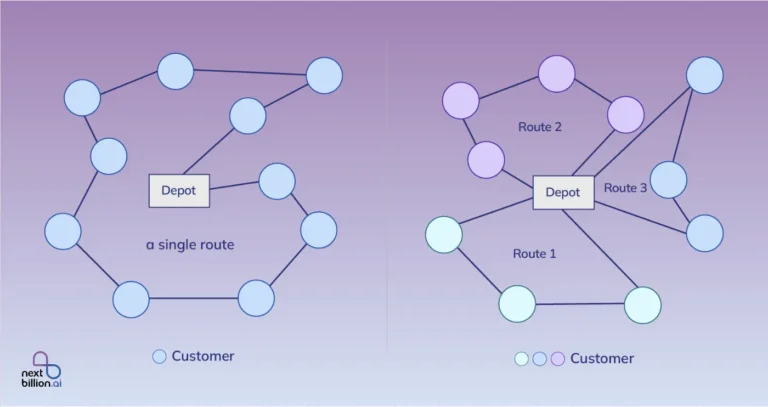
Table of Contents
In today’s competitive transportation industry, truck driver retention has become one of the most critical challenges for fleet managers and logistics companies. Increased expenses, a decline in customer satisfaction, and a major impact on operational efficiency can all result from high turnover rates. A competent and driven crew is critical to the success of any organization, especially as the need for trained drivers increases.
This manual offers useful tactics and insights to help companies in increasing driver retention. This guide gives you the practical tools you need to create a devoted and devoted driving team, from knowing the main causes of driver turnover to putting in place efficient retention strategies. Whether you manage a small fleet of vehicles or a major logistics company, following these suggestions can help you lower turnover, improve employee happiness, and foster a healthy work atmosphere.
The Importance of Driver Retention
Any company that can retain their drivers will surely attain success. Keeping a steady staff with skilled and experienced drivers boosts overall operational effectiveness. When there is high turnover, a series of problems like costs of hiring and training new employees, messed up service schedules, and worse customer satisfaction will emerge.
To increase the operational efficiency of the company, retaining experienced and skilled drivers are necessary. By retaining the drivers any logistics or transportation company can attain success. Drivers who stay for many years in the company will know the policies and strategies of the company. This will directly increase the customer satisfaction of the company.
The following are some primary reasons for why driver retention is crucial:
Cost Reduction
The cost of hiring new employees is very high, this cost involves their training and certification amount. Companies can save money on the onboarding process by keeping the existing drivers.
Operational Efficiency
When there are experienced drivers in the company, all operations will function smoothly. Such drivers will have a lot of commitments towards their service. They will be well-versed in the policies, routes and safety procedures. More workforce continuity means a more dependable service.
Customer Satisfaction
Consistency and prompt delivery are valued by customers. Relationships with clients may suffer as a result of delays or service interruptions caused by high turnover. Maintaining drivers contributes to a dependable and consistent service, which builds client confidence.
Reputation in the Industry
Companies with a reputation for high turnover may find it difficult to retain great drivers over the long run. Recruiting and retaining exceptional employees is made easier when the organization has a strong retention plan in place.
The High Cost of Driver Turnover

Do you have any idea how much it costs to replace a driver? Driver turnover is not a logistical issue, it shows the financial burden for the transportation companies. The costs related to driver turnover go far beyond recruitment to operational inefficiencies, and lost business opportunities.
You should also consider the losses for the drivers who leave in between. In such cases you put all your time and money into that resource who ends up in utilizing all the potential service you provide and resign after receiving it. What is worse than this is losing your driver to your competition.
The above mentioned problems can be easily resolved by driver retention. The benefits are massive if you keep the same team of drivers for a long period of time. You can develop a solid trust within your staff if forever retention is done properly.
This helps to create a support system to help newer drivers as they come aboard. All this leads to building a company that feels like a family, that makes the drivers no longer want to leave.
Truck Driver Retention Statistics
With the turnover rate consistently rising in the trucking sector, driver retention has become a pressing issue in the transportation industry. When the company makes an effort to understand the data behind driver turnover helps the company tackle the severity of the issue and benchmark their own retention efforts.
The following significant figures demonstrate the continuous difficulties in keeping truck drivers:
High Turnover Rates
In the US, the average turnover rate for large truckload carriers is between 80% and 90%, whereas smaller carriers may have a rate of 100% or higher. This suggests that a large number of trucking companies have to replace nearly all of their driver personnel on a yearly average.
Cost of Replacing a Driver
Research indicates that the cost of recruiting a new truck driver might range from $8,000 to $15,000, depending on the type of business and the complexity of the hiring process. This includes the price of hiring, onboarding, training, and lost productivity.
New Driver Retention Rates
Most newly licensed drivers give up their licenses during the first year of their license. Studies have shown that 35–40% of recently employed truck drivers leave their positions within the first three months, and nearly 50% leave within the first six.
Demographics and Retirement
The retention issue becomes even more challenging to resolve as employees get older. The average age of truck drivers in the US is 46, and many are almost ready to retire. This puts more pressure on the company to retain younger drivers and replace retired ones.
These data points emphasize how important it is for trucking companies to develop and implement effective retention strategies. By addressing the primary causes of high turnover, firms can save costs and improve operational stability in a market that is highly competitive.
Creating a Driver Retention Plan
For the transportation companies looking to reduce turnover and build workforce they need a well-structured driver retention plan. The companies need to address both the short-term and long-term needs of drivers while preparing a healthy work environment. Below are few steps to consider when developing a comprehensive driver retention plan:
Survey the Satisfaction of Drivers
Before putting retention measures into practice, it’s critical to understand what drivers are looking for in a committed job inside the organization. Conducting in-person interviews or administering a survey to drivers can yield valuable insights into their job satisfaction, shared issues, and opportunities for growth.
Offer Work-Life Balance as First Priority
You should establish a balanced workload that minimizes the burnout, allowing drivers to maintain a healthy work-life balance. One of the important issues faced by the drivers is spending extended periods away from home.
Offering flexible options, routes, and ensuring that drivers have enough time to spend at home will improve their job satisfaction.
Make an Investment in Career Development and Ongoing Training
Drivers are drawn to growth chances. Companies may assist drivers rise within the company, stay current on safety procedures, and improve their skills by regularly funding professional development and training programs.
Encouraging drivers with career advancement opportunities or positions in management, training, or mentorship maintains their loyalty.
Improve Safety and Comfort for Drivers
Driver happiness can be significantly increased by spending money on newer, well-maintained trucks with contemporary conveniences. Driving in a vehicle that is safe, pleasant, and dependable boosts driver confidence and lessens the strain of operating outdated machinery.
Drivers can also be encouraged to stay longer by putting solid safety regulations into place, offering the required resources and training, and praising safe driving practices.
Talk about wellness and health.
It takes a lot of physical and mental energy to operate a truck. By giving drivers access to wellness programs, exercise materials, and health examinations, it can help them feel taken care of and promote their health.
Encourage good eating, regular exercise, and mental health support to develop safe driving practices.
Companies must maintain their connection with the drivers not only to address the common causes of turnover but also to provide proper support and rewards on time. Armstrong retention pal will ultimately reduce the costs and strengthen the overall condition of the company.
Measuring The Effectiveness of Your Driver Retention Plan
The companies take a lot of effort to implement a driver retention plan, but it’s very essential to measure its effectiveness to ensure that the plan is achieving its desired outcomes. This will allow you to refine and improve the strategy over time. Here are key ways to assess the impact of your driver retention plan:
Turnover Rate
The direct metric to track is the driver turnover rate. Below is the formula for calculating turnover rate:
Turnover Rate = (Number of Departing Drivers / Total Number of Drivers) × 100
A decreasing turnover rate after implementing your retention plan is a strong indicator of its success.
Driver Tenure
The average number of years that drivers stay with your business is another important statistic. Monitoring driver tenure makes it easier to determine whether your attempts to retain drivers are making them work longer hours. To determine whether there has been an improvement, compare the average tenure before and after your retention plan was put into action.
Exit Interviews
Conducting in-depth exit interviews with departing drivers might yield important insights into their motivations. By examining these answers, patterns and the underlying reasons for turnover can be found. It may be a sign that your retention plan is working if the reasons people are leaving are becoming less about management, home time, or compensation and more about personal or inevitable reasons.
Driver Satisfaction Surveys
Surveying your present drivers on a regular basis gives you firsthand insight into their opinions of their positions and the retention programs you’ve put in place. Job satisfaction, work-life balance, management communication, and pay are important areas to evaluate. It will be possible to determine whether the retention plan is enhancing the overall driver experience by monitoring changes in satisfaction levels over time.
Recruitment Costs
Keep an eye on the expenses related to hiring new drivers both before and after you implement your retention plan. The need for new workers should decline if your retention initiatives are successful, which will cut down on the expenditures associated with hiring, such as advertising, onboarding, and training. One obvious financial benefit of an efficient retention plan can be lower hiring costs.
Performance and Productivity
Productivity gains are frequently the result of retention strategies that boost driver morale and job satisfaction. Track key performance indicators (KPIs) include safety performance, fuel efficiency, and on-time deliveries. Increased output and fewer disruptions to operations may be signs that your efforts to retain drivers are keeping them motivated and engaged.
Safety and Compliance Records
Monitoring safety indicators like accidents, infractions, and compliance problems is crucial if retention efforts involve safety training and wellness measures. A decrease in safety accidents and infractions could indicate that drivers are more skilled, motivated, and knowledgeable about following safety procedures, all of which could lead to improved performance as a whole.
Referrals and Internal Recruitment
An increase in the quantity of recommendations made by present drivers may indicate increased morale. It’s usually a sign of employment satisfaction when drivers are promoting their employer to others. After putting your retention strategy into practice, keep track of how many new hires come from internal referrals and record any increases.
Cost-Benefit Analysis
In the end, a thorough understanding of your retention plan’s financial impact can be obtained by performing a cost-benefit analysis. Examine the savings from fewer turnover, lower recruitment costs, and higher productivity against the costs of putting the strategy into action (pay increases, benefits, training programs, etc.). Financial success for your retention plan is achieved if the advantages outweigh the disadvantages.
Top Reasons why Drivers Quit

A lot of very personal factors contribute to professional drivers’ quitting their jobs. Yet among the most common grievances are:
- Not experiencing a sense of worth or appreciation from their companies
- Lacking any work-life harmony
- being paid too little
- Absence of advantages
- Inadequate equipment
- Becoming overburdened as a result of high turnover rates
7 Effective Strategies to Improve Truck Driver Retention
As we have discussed already, improving truck driver retention requires a structured approach towards the drivers needs, preferences and challenges they face everyday. Companies can create a positive work environment that reduces turnover and enhances driver satisfaction. This proportionately improves loyalty. Here are some effective strategies to retain your truck drivers:
Address Driver Concerns Promptly
Feeling undervalued in a workplace is a very crucial point where one decides to quit the organization. When issues and challenges arise, addressing them quickly may prevent drivers from feeling ignored.
The Company is responsible to pay attention even if it is related to equipment concerns, pay discrepancies, or route changes. The company has to establish a rapid response team to handle driver concerns within 24-28 hours.
By putting in place a systematic feedback system, management and drivers can talk about job happiness, equipment problems, and performance. Furthermore, it can be extremely helpful to give drivers a quick call to check on them while they’re driving; this shows that you care about their well-being and offers support.
Avoid micromanaging
If dispatchers don’t trust their drivers, they can start micromanaging. Occasionally, this may appear as a persistent caller inquiring about the driver’s whereabouts and the progress they’re making. Drivers undergo pressure as a result of everything.
Since drivers are drawn to the profession as they value autonomy and independence, micromanaging them would only produce conflict and dissatisfaction.
Performance metrics must be well defined in order for drivers to fully understand them and to be able to set expectations and encourage accountability. Investing in GPS tracking software that provides real-time information and prevents invasive surveillance allows for efficient monitoring without compromising drivers’ privacy.
In addition, promoting driver independence and imparting knowledge to dispatchers on building trust with drivers promote a more amicable and collaborative work environment. Increased productivity and job satisfaction are a result of clear expectations, practical tools, and an appropriate level of trust.
Assist drivers in creating effective routes
How do you manage the route planning? Do you involve in the planning or leave it up to the drivers? Spending time on route planning manually is a waste of time. It takes a lot of time for the drivers if they get involved in creating the route for the day. It affects their productivity.
Investing in driver apps and route optimization software can assist your drivers in determining the shortest and most efficient routes for the day.
Driver satisfaction will increase, and they might even complete their routes ahead of schedule. Who among the drivers wouldn’t be delighted at the chance to return home early?
Competitive Compensation and Benefits
Enticing drivers with competitive pay and an extensive benefits package is crucial to keeping them on board. Think about performance-based bonuses, safety incentives, and sign-on bonuses for new recruits in addition to base compensation. Offering benefits like paid time off, wellness initiatives, retirement plans, and health insurance can improve employee retention and make your business more appealing.
Recognition and Rewards Programs
Recognizing and rewarding drivers for their hard work and dedication is a powerful motivator. Implement a recognition program that highlights driver achievements such as safe driving, exceptional service, and loyalty to the company. Rewards can include monetary bonuses, gift cards, public recognition, or even additional time off.
Spend money on high-quality equipment
Good equipment is essential for the wellbeing and safety of drivers. When truckers examine fleets, they frequently bring up problems with quality of the equipment and maintenance of the existing equipment.
It is very important to provide comfortable equipment like conditioned vehicles, navigation systems and other essential products to your drivers to make them comfortable during voyages. This will help in creating a safety culture for your drivers, respecting the caliber of the equipment.
It is essential to regularly update driving equipment to ensure optimal performance and safety. Consistent maintenance is required to identify and address issues early. This method ensures all vehicles are in good condition. This schedule is important for minimizing breakdowns and to enhance the overall efficiency of the operations.
A healthy balance between work and life.
Drivers must find a good work-life balance for both their long-term productivity and wellbeing. Encouraging proper working hours, providing enough breaks, and ensuring drivers have time for personal commitments can all help reduce stress and tiredness. A supportive environment that prioritizes their needs, both personal and professional, raises their level of general well-being, job satisfaction, and driving safety. By promoting this balance, businesses can keep skilled drivers and create a gratifying, long-lasting work environment.
How to calculate your driver turnover rate
The simple procedure for calculating driver turnover rate aids in determining the proportion of drivers who depart a business within a given time frame. To compute it, take the following actions:
Determine the time frame: To get the turnover rate, select a certain time frame (monthly, quarterly, or annual).
Find the number of drivers at the start of the period:At the start of the term, count the total number of drivers who were employed.
Find the number of drivers who left during the period: Determine how many drivers were fired, resigned, or retired over the chosen period of time.
Find the average number of drivers during the period: To find the average number of drivers, add the number of drivers at the beginning and end of the period, then divide the result by two.
Calculate the turnover rate: To find the percentage, divide the total number of drivers who departed by the average number of drivers over the time period, then multiply the result by 100.
Nextbillion.ai’s Effective Route Optimization tool to enhance Operations

Optimization of routes is essential for a number of reasons:
Cost Reduction: By figuring out the best routes, businesses can cut down on fuel usage and auto maintenance expenses, which will have a direct effect on their bottom line.
Environmental Impact: Reduced emissions from optimized routes help businesses comply with regulations and promote environmental sustainability.
Customer Satisfaction: Dependable transportation services and on-time delivery increase client satisfaction and loyalty.
Resource Utilization: By ensuring the best possible use of both human and vehicle resources, efficient routing helps to avoid either overuse or underuse.
Competitive Advantage: Businesses can outperform rivals by providing services more quickly and for less money when they employ efficient route optimization techniques.
Timely deliveries are guaranteed via optimized routes, which exceeds customer expectations and boosts satisfaction. Companies that streamline their routes can outperform rivals by providing superior products and services at lower costs. Furthermore, it permits scalability without corresponding cost increases.
Conclusion
In conclusion, improving truck driver retention requires a multifaceted approach that prioritizes both the professional and personal needs of drivers. By maintaining a modern, well-serviced fleet, clearly defining performance expectations, and fostering open communication through regular feedback, companies can create a supportive and respectful work environment.
Investing in tools that enhance efficiency without infringing on driver autonomy, and promoting a healthy work-life balance, further strengthens retention efforts. Ultimately, building trust, recognizing drivers’ contributions, and addressing their concerns in a timely manner are key to cultivating long-term loyalty and reducing turnover.
In conclusion, by prioritizing both the professional and personal needs of drivers requires a multifaceted approach. By maintaining a regular, well- maintained vehicle, clarifying performance expectations and allowing open communication, companies can provide a supportive and comfortable environment.
I recommend Nextbillion.ai as the perfect partner for your drivers to optimize routes and enhance efficiency throughput the operations. This tool helps in reducing delivery times, saving big on fuel costs, and boosting fleet’s efficiency.
About Author
Divya Nair
Divya is a dedicated Technical Content Writer with experience of two years in the industry. Her expertise spans various forms of writing, including blogs and website content.









